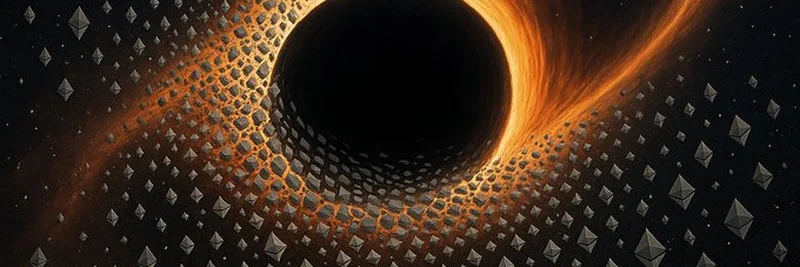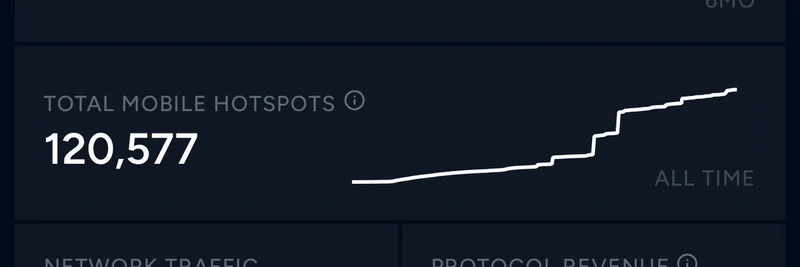Hey there, crypto enthusiasts! If you’ve been scrolling through X lately, you might have stumbled upon a mind-blowing post by sassal0x that’s got everyone talking. The tweet compares the rise of Ethereum (ETH) ETFs and treasury companies to a cosmic black hole—sucking in more ETH as its value skyrockets. Let’s dive into this intriguing analogy and unpack what it could mean for the future of Ethereum.
The Black Hole Effect: What’s Happening?
Imagine a black hole in space, pulling everything into its gravitational grip. Now picture Ethereum tokens (those diamond-shaped ETH symbols) being drawn into a similar vortex. According to sassal0x, ETH ETFs (Exchange-Traded Funds) and Ethereum treasury companies are creating a self-reinforcing cycle. Here’s how it works:
- ETFs Buy ETH: These funds, which recently got the green light from regulators, start purchasing large amounts of Ethereum.
- Price Goes Up: As demand increases, so does the price of ETH.
- More Buying: Higher prices attract even more investment, fueling the cycle.
The tweet suggests this could push Ethereum’s valuation to a staggering $100 trillion or more. That’s a number that sounds like science fiction, but the logic behind it is rooted in basic supply and demand.
Why the Black Hole Analogy Fits
The image accompanying the post is a stunner—a swirling black hole with ETH symbols spiraling inward, surrounded by fiery orange rings. It’s a perfect visual metaphor. In astrophysics, a black hole grows by absorbing mass, and in this case, the “mass” is the increasing value and adoption of Ethereum. The fiery rings could represent the intense market activity driven by institutional investors and companies stacking ETH on their balance sheets.
This analogy also hints at an unstoppable force. Just as light can’t escape a black hole’s gravity, some wonder if regulators or market forces can slow this ETH accumulation. One X user, Dr. Martino, asked if regulators might step in, while others like Crypto Sensei are just excited to see their bags (crypto holdings) grow!
The Role of ETFs and Treasury Companies
ETH ETFs are a game-changer. Unlike traditional crypto investments, these funds allow regular investors to gain exposure to Ethereum without owning the crypto directly. Since their approval, we’ve seen a surge in interest, with companies like BitMine Immersion Technologies pivoting to Ethereum-focused strategies. Treasury companies, meanwhile, are firms holding ETH as a reserve asset, much like how countries hold gold. This dual demand could indeed create a “flywheel effect,” as Shubys™️ put it, where ETH serves as collateral, a staking asset, and a payment medium all at once.
Could This Really Hit $100 Trillion?
Let’s break it down. Ethereum’s market cap today hovers around $400 billion (as of mid-2025 estimates). Reaching $100 trillion would require a 250x increase. While that sounds wild, consider Bitcoin’s journey—its market cap grew from negligible amounts to over $1 trillion in a decade. With Ethereum’s utility in decentralized finance (DeFi), NFTs, and smart contracts, plus the institutional boost from ETFs, the trajectory isn’t entirely implausible. Still, it hinges on widespread adoption and regulatory stability.
The Risks and Reactions
Not everyone’s cheering. Some X users, like Sejo.eth, worry this could send the market into chaos if the bubble bursts. The black hole analogy also implies a point of no return—once the momentum builds, it might be hard to control. But for optimists like Pixel Nakamoto, it’s all about riding the wave and stacking more ETH.
What’s Next for Ethereum?
This X thread has sparked a lively debate, and it’s a great reminder of how crypto markets thrive on bold ideas. Whether Ethereum becomes a $100 trillion asset or hits a snag along the way, the conversation itself highlights the innovative spirit of the blockchain community. Keep an eye on meme-insider.com for more updates on how meme tokens and major cryptocurrencies like ETH shape the future.
What do you think—will this black hole keep growing, or is it a risky orbit? Drop your thoughts in the comments, and let’s keep the discussion going!



